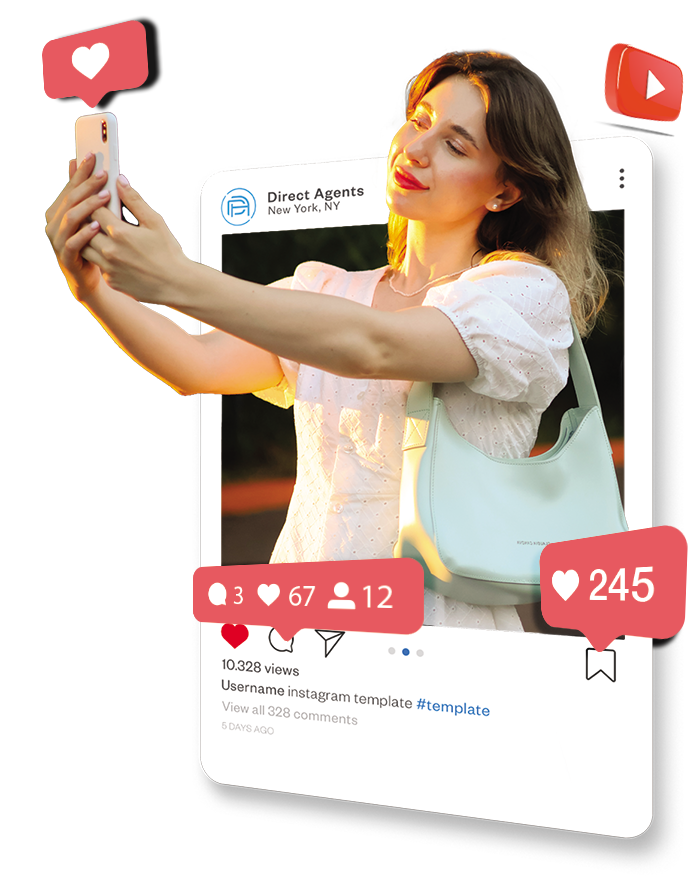INFLUENCER
MARKETING
GUIDE TO EFFECTIVE
PARTNERSHIP STRATEGIES
Influencer Marketing is revolutionizing how brands connect with audiences. With a staggering 63%
of Gen Z and 66% of Millennials placing their trust in
brands promoted by online influencers, the power
of digital creators is undeniable. For brands aiming
to be at the forefront of consumers’ minds when considering
these purchasing decisions, aligning
with these pivotal creators is essential.
Influencer Marketing is revolutionizing how brands connect with audiences. With a staggering 63% of Gen Z and 66% of Millennials placing their trust in brands promoted by online influencers, the power of digital creators is undeniable. For brands aiming to be at the forefront of consumers’ minds when considering these purchasing decisions, aligning with these pivotal creators is essential.
Katherine Grabowsky
Senior Content Marketing & Creative Specialist


1
First, it begins with scouting the right influencer
Micro-influencers (<100,000 followers): These creators are your go-to for niche targeting and bang-for-your-buck content. With their niche audiences, they offer targeted brand visibility. Plus, their flexibility with content usage rights is an added benefit for brands looking for long-term content utilization. Brands will often purchase content rights in perpetuity, making these partnerships a win-win for audience engagement and continued content usage.
Macro (100K-1M followers) & Mega Influencers (>1M followers): Larger partnerships are perfect for brands looking to make a big splash with measurable reach, rather than prioritizing engagement. However, these partnerships come with a price tag – their costs can reach tens of thousands of dollars per post, depending on their audience size and follower engagement. In addition, they often have less flexibility with content usage rights and activation timelines.
2
Crafting content to go viral
There are a range of ways for brands to collaborate with creators, depending on overarching brand goals and campaign KPIs.
*Include screenshots or images for these*
Giveaways: This is a perfect option for brands looking to spike brand awareness quickly through special giveaways or promotions.
*Insert screenshot of Instagram caption highlighting a giveaway
Product Reviews: Influencers give their honest take, building trust and curiosity. These creator videos are a great way for brands to establish social proof for products or services that require additional deliberation before a user makes a purchase.
Social Takeovers: Bring a fresh face and a new perspective to your social channels with influencer takeovers. Takeovers solidify these influencers’ position as brand ambassadors, rather than one-off content creators.
Tutorials & How-tos: From ‘Get Ready With Me’ sessions to cooking demos, these are a window to seeing your products in action.
*Include a bunch of screenshots of “GRWM” captions on TikTok”
Event Collabs: Engage influencers in brand events or product launches to amplify excitement.
Include an example of event collaboration
3
Measure campaign impact
When considering influencer measurement, it’s important to take both short-term and long-term measurement tactics into account.
Immediate Metrics include reach, engagement, promo code uses, and sales differentials pre and post-campaigns.
Big Picture Metrics
Increase in Branded Search Volume: A surge in post-campaign brand searches signals a successful awareness boost.
Website Traffic Boost: More website visitors signify campaign success. Many users may not engage immediately but often return to the website after multiple touchpoints. This metric underscores the sustained influence these campaigns have on overall website engagement.
Lead Generation: While not always a direct sale, capturing leads – whether it’s email sign-ups, contest entries, or other forms of engagement – can be a valuable long-term result of an influencer campaign.
Influencer marketing isn’t just a trend; it’s a powerful strategy reshaping the digital marketing landscape. With a blend of thoughtful strategy and continuous impact measurement, it positions brands not just to compete but to lead in a competitive marketplace.

